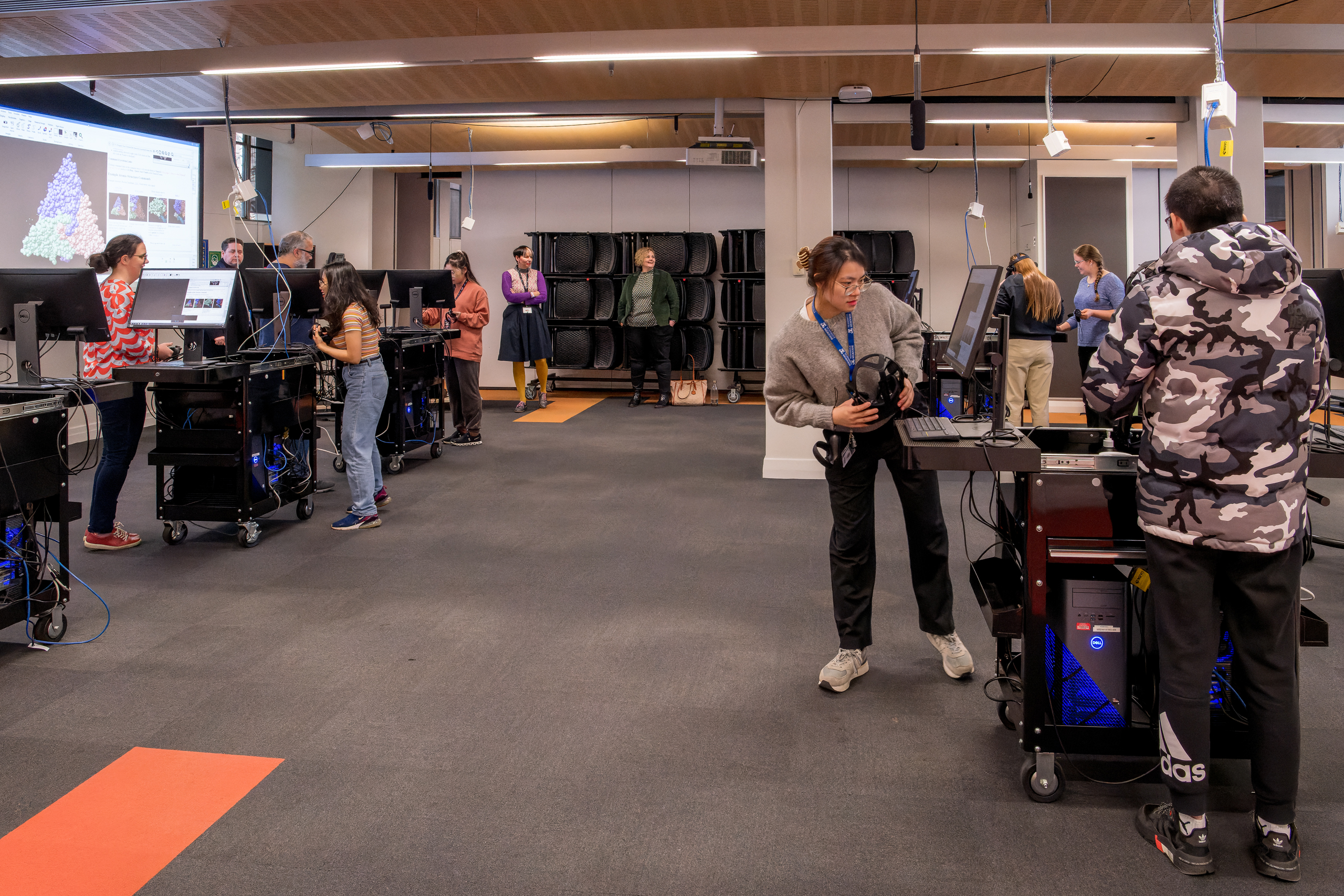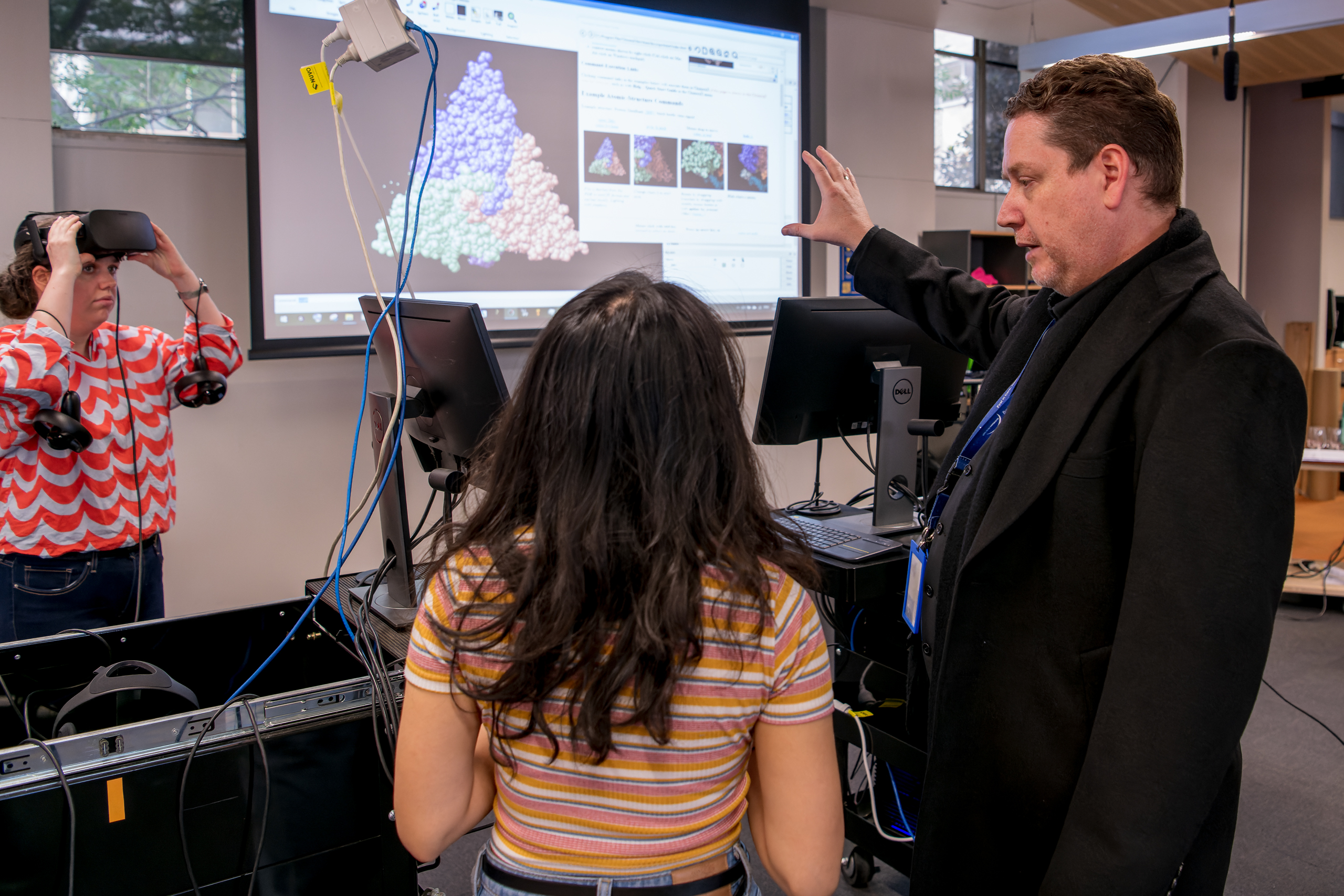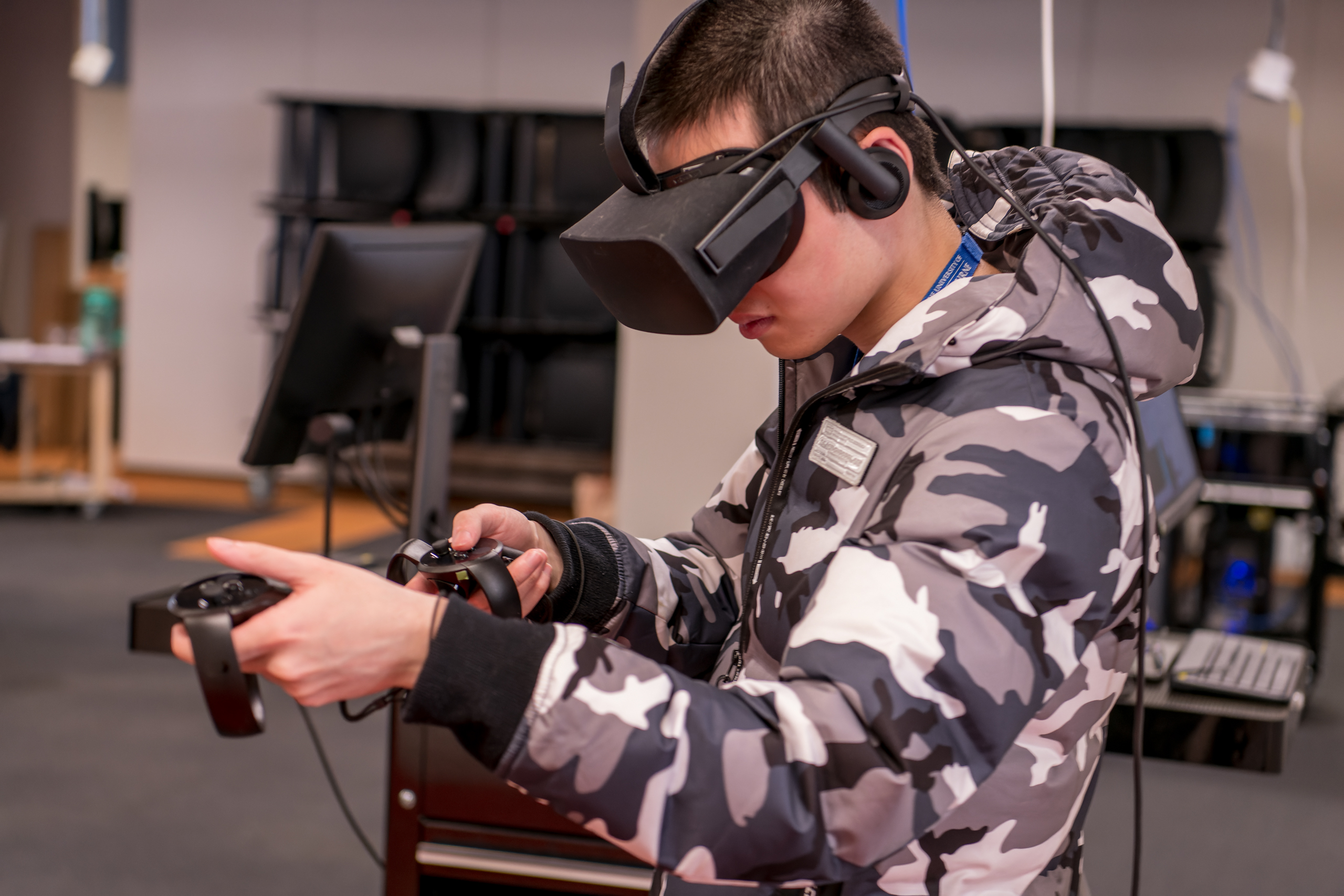Going Viral: Exploring Viruses in Virtual Reality
The Royal Melbourne Hospital Dr Jason Roberts, Senior Scientist at the Victorian Infectious Diseases Reference Laboratory and Head of the Electron Microscopy and Structural Virology Laboratory at the Peter Doherty Institute for Infection and Immunity (Doherty Institute), showed some of our Masters of Biomedical Science students how a modern virologist works in virtual reality (VR), using samples from his own published work. This exciting new workshop created by Dr Roberts and University of Melbourne Dr Sarah Londrigan, Senior Lecturer Virology at the Doherty Institute lets students visualise real-world applications of VR as used in the intersecting disciplines of public health and basic research.
 Students get ready to don headsets and explore viruses in VR
Students get ready to don headsets and explore viruses in VR
In a cutting-edge learning experience, Masters of Biomedical Science students in the Defence and Disease: Frontier Technologies subject BMSC90019 (coordinated by Dr Sarah Londrigan, Dr Jessica Welch and A/Prof Odilia Wijburg at the University of Melbourne's School of Biomedical Sciences) recently experienced life as a modern virologist. They immersed themselves (safely!) inside an infectious virus particle through virtual reality (VR) in the Digital Learning Hub. Led by Dr Jason Roberts and Ms Jamie Mumford of Doherty Institute's Electron Microscopy and Structural Virology Laboratory, our students embarked on a journey of scientific exploration that merged technology, public health and academia like never before.
 Dr Jason Roberts (right) teaches students how to manipulate virus structures in virtual reality.
Dr Jason Roberts (right) teaches students how to manipulate virus structures in virtual reality.
Under Dr. Roberts' expert guidance, the students delved into the intricate world of viruses by examining the three-dimensional structure of the insect virus black beetle nodavirus in VR using ChimeraX. They learned to navigate through three-dimensional structures and how to manipulate various display settings to gain a comprehensive understanding of the viral anatomy. Additionally, the students practiced aligning cryo-electron micrographs with atomic models, a crucial aspect of advanced virological research.
The ability to rapidly derive and visualise electron microscopy data in 3D virtual reality space, particularly during events of significant public health impact, adds a whole new dimension to the identification and morphological characterisation of pathogens and related atomic structures. Combined with advances in artificial intelligence, the future of imaging in relation to pathogen identification, reference and research is immensely exciting.
— Dr Jason Roberts
 Students enjoyed using VR to learn about viruses.
Students enjoyed using VR to learn about viruses.
Once the students had familiarized themselves with the intricacies of working with viruses in a virtual environment, they turned their attention to a sample of Mpox-infected cellular material provided by Dr. Roberts[1]. Unlike traditional 2-dimensional screens, the VR technology allowed the students to freely explore the entire slice of infected cells, enabling them to observe the distinctive dumbbell-like structures within the Mpox virions, that serve as a diagnostic hallmark of poxvirus infection.
 A student considers the next step in the workshop.
A student considers the next step in the workshop.
The use of VR in the subject Defence & Disease: Frontier Technologies not only provided a realistic and engaging experience, but also offered the students a unique perspective on the subject matter. By transcending the limitations of conventional learning methods, this immersive VR adventure granted the students a sense of freedom to examine infectious diseases in a more comprehensive and interactive manner, using the same technologies that experts in the field use daily.
This subject introduces students to a range of specialised and emerging research techniques and technologies and applies them to understanding contemporary research problems that intersect with public health responses.
— Dr Sarah Londrigan
 A student immersed in the manipulation of virus particles in virtual reality.
A student immersed in the manipulation of virus particles in virtual reality.
Article text by Jairus Bowne & ChatGPT[2]. Editors: Dr Sarah Longdrigan, Dr Jason Roberts, Aline Riche.
This article has also been published in slightly modified form at the Doherty's news and events page.
References
[1] Lim, C. K., Roberts, J., Moso, M., Liew, K. C., Taouk, M. L., Williams, E., Tran, T., Steinig, E., Caly, L., & Williamson, D. A. (2023). Mpox diagnostics: Review of current and emerging technologies. Journal of Medical Virology, 95(1). https://doi.org/10.1002/jmv.28429
[2] OpenAI. (2023). ChatGPT (23 May 2023) [Large language model]. https://chat.openai.com/